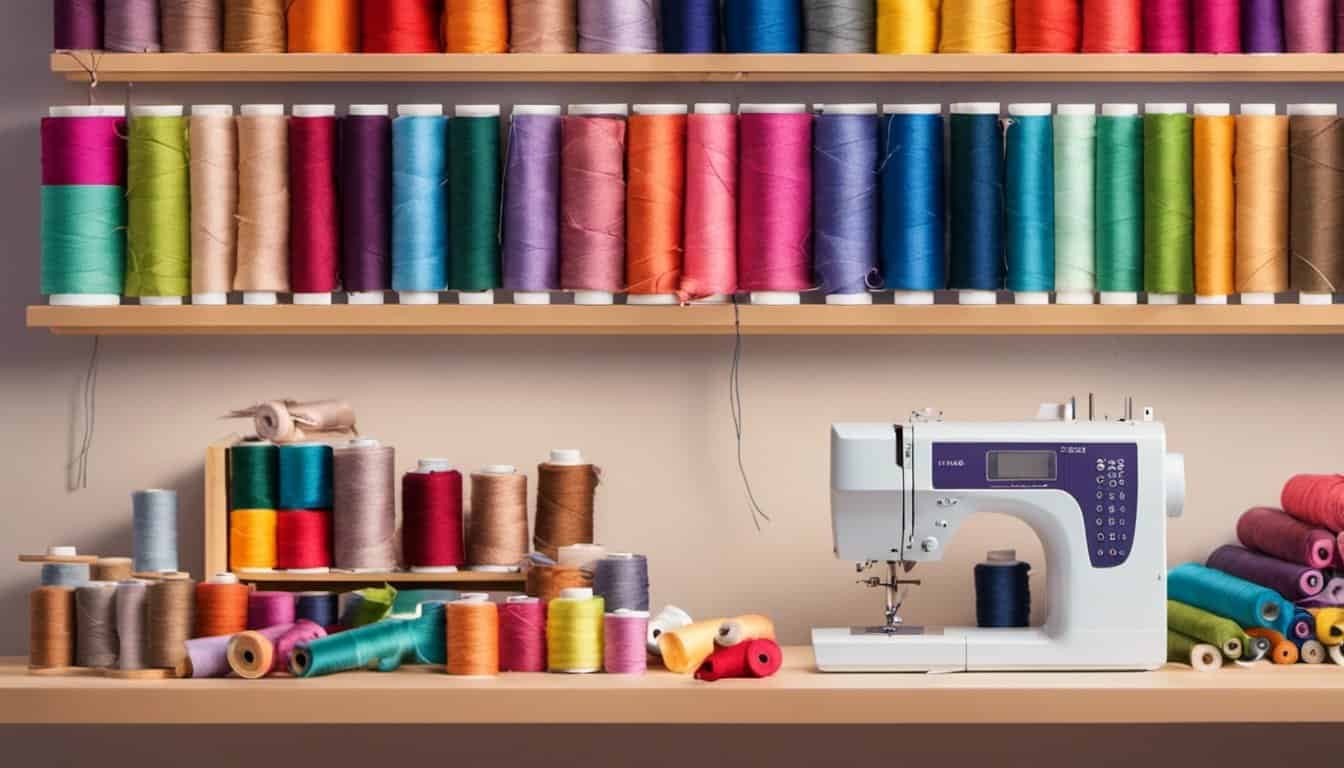Ever found yourself wondering whether to pick up a needle and thread or a packet of seeds? The choice between sewing and sowing might seem trivial, but both activities offer unique joys and rewards. Whether you’re crafting a cozy quilt or nurturing a garden, each has its own charm and satisfaction.
Understanding the Basics of Sewing and Sowing
When diving into the world of crafting and gardening, understanding the basic concepts of sewing and sowing is essential. Both activities offer unique opportunities for creativity and growth.
Defining Sewing
Sewing involves using a needle and thread to join fabric pieces. It’s employed in various crafts like quilting, dressmaking, and embroidery. You can create clothing, accessories, and home decor items through sewing. Tools commonly used include needles, thread, scissors, and sewing machines.
Defining Sowing
Sowing refers to planting seeds in soil. It’s a fundamental gardening activity critical to growing flowers, vegetables, and herbs. Proper sowing techniques ensure seeds germinate and plants thrive. You might use tools like spades, trowels, and seed trays when sowing.
Historical Context and Evolution
For centuries, humans have engaged in sewing and sowing, each possessing rich histories and significant impacts on cultures worldwide.
The History of Sewing
Sewing predates written history, with early evidence found in archaeological discoveries from 25,000 years ago. Ancient people used bone needles and animal sinew to stitch together hides and furs for clothing. By the 14th century, metal needles and silk thread had replaced these rudimentary materials, facilitating more intricate garments and decorative elements. The invention of the sewing machine in the 19th century revolutionized the craft, making it accessible and efficient for the masses. Today, you benefit from a long tradition of innovations, from industrial machines to digital embroidery tools.
The History of Sowing
Sowing seeds also boasts an ancient origin, aligning closely with the advent of agriculture around 10,000 years ago. Early humans transitioned from hunter-gatherer societies to settled farming communities, cultivating crops like wheat, barley, and legumes. Evidence of early sowing practices appears in ancient Mesopotamian and Egyptian records, with techniques evolving alongside civilization. The development of modern agricultural tools and methodologies has significantly increased efficiency. You now enjoy a wealth of knowledge and tools, from manual seed drills to automated planting machines, reflecting thousands of years of agricultural advancement.
Key Techniques in Sewing
Explore the foundational elements of sewing with a focus on fabric selection and essential techniques. Success in sewing starts with knowing your materials and mastering key methods.
Selection of Fabrics
Choosing the right fabric ensures your project’s success. Consider these factors:
- Fiber Content: Natural fibers like cotton and wool breathe well, while synthetic fibers like polyester offer durability.
- Weight: Light fabrics (e.g., chiffon) suit delicate garments, whereas heavy fabrics (e.g., denim) are ideal for sturdy items.
- Weave: Tightly woven fabrics last longer, while loosely woven ones allow for more drape.
- Pattern: Select patterns that align with your project’s design, considering ease of cutting and alignment.
Essential Sewing Techniques
Mastering certain techniques forms the foundation for any sewing project. Key methods include:
- Basic Stitches: Running stitch, backstitch, and whipstitch form the basis, useful for seams and hems.
- Seam Finishes: Prevent fraying with techniques like serging, pinking, and binding.
- Zipper Installation: Choose between centered, lapped, or invisible zippers depending on your garment’s style.
- Buttonholes: Reinforced holes ensure durability for functional buttons, with modern machines offering automated options.
Understanding these techniques elevates your sewing skills, allowing you to tackle diverse projects confidently.
Key Techniques in Sowing
Effective sowing requires understanding various methods and their timing. This section covers essential techniques to help you succeed in your gardening endeavors.
Preparation of the Soil
Ensure your soil is properly prepared before sowing seeds. Clearing debris like rocks, sticks, and old plants is essential. Work the soil to a fine texture using a rake or hoe. Incorporate organic matter like compost or well-rotted manure to improve soil structure and fertility. Test soil pH with a testing kit to ensure it’s suitable for the type of seeds being sown. Adjusting pH, if necessary, guarantees optimal nutrient availability.
Sowing Methods and Timing
Choose the right sowing method based on the seed type. Use broadcasting for grass seeds, scattering them evenly across the soil surface. For row planting, create furrows and place seeds at uniform depths, covering them lightly with soil. Hill planting is ideal for crops like beans, where seeds are placed in mounds. Timing is crucial for successful germination. Consult seed packets or gardening guides for the best sowing times based on your climate zone. Use succession planting to extend harvest periods by sowing seeds at intervals. Keeping a planting calendar can help you stay organized and ensure timely sowing.

Implementing Sewing and Sowing in Daily Life
Adding sewing and sowing to your daily routine can be both fulfilling and practical. Whether you’re interested in creating custom clothes or cultivating a beautiful garden, integrating these skills into your everyday life brings numerous benefits and endless creativity.
Practical Tips for Beginners in Sewing
Start Small: Begin with simple projects like pillowcases or tote bags. These help you practice basic skills without feeling overwhelmed.
Invest in Quality Tools: Purchase good quality needles, threads, and fabric scissors. They make a significant difference in your sewing experience.
Learn Basic Stitches: Focus on mastering basic stitches like the running stitch, backstitch, and slip stitch. These foundational stitches form the basis for more complex techniques.
Use Patterns: Follow beginner-friendly patterns to guide your projects. They provide a structured approach and help you learn how to read and interpret sewing instructions.
« 10 Easy Sewing Projects for Clothes that Every Beginner Will Love
7 Genius Ways to Hem Your Pants Without Sewing – No Experience Needed »
Practice Regularly: Like any skill, sewing improves with practice. Dedicate at least 15-30 minutes daily to sewing activities.
Practical Tips for Beginners in Sowing
Choose the Right Seeds: Select seeds suited to your climate and soil type. This increases your chances of successful growth.
Prepare Soil: Ensure soil is well-drained and rich in nutrients. You can add compost or organic matter to improve soil quality.
Water Properly: Keep soil consistently moist but avoid overwatering. Proper watering is crucial for seed germination and growth.
Follow Spacing Guidelines: Pay attention to spacing recommendations on seed packets. Proper spacing reduces competition for resources and promotes healthy plant development.

Consider Sunlight: Ensure your sowing area receives adequate sunlight. Most plants need at least 6 hours of sunlight daily.
Implementing these practical tips helps you effectively incorporate sewing and sowing into your daily activities, making both processes enjoyable and productive. Whether you craft garments or grow vegetables, you’ll gain satisfaction and tangible outcomes from your efforts.
Conclusion
Whether you’re creating a beautiful garment or nurturing a garden, both sewing and sowing offer unique joys and rewards. Embracing these activities can enrich your daily life, providing a sense of accomplishment and creativity. Remember, starting small and practicing regularly are key steps to mastering either craft. So grab your needle or your seeds, and dive into the world of sewing and sowing. You’ll find that the time and effort you invest will bloom into something truly wonderful. Enjoy the journey and happy crafting!












